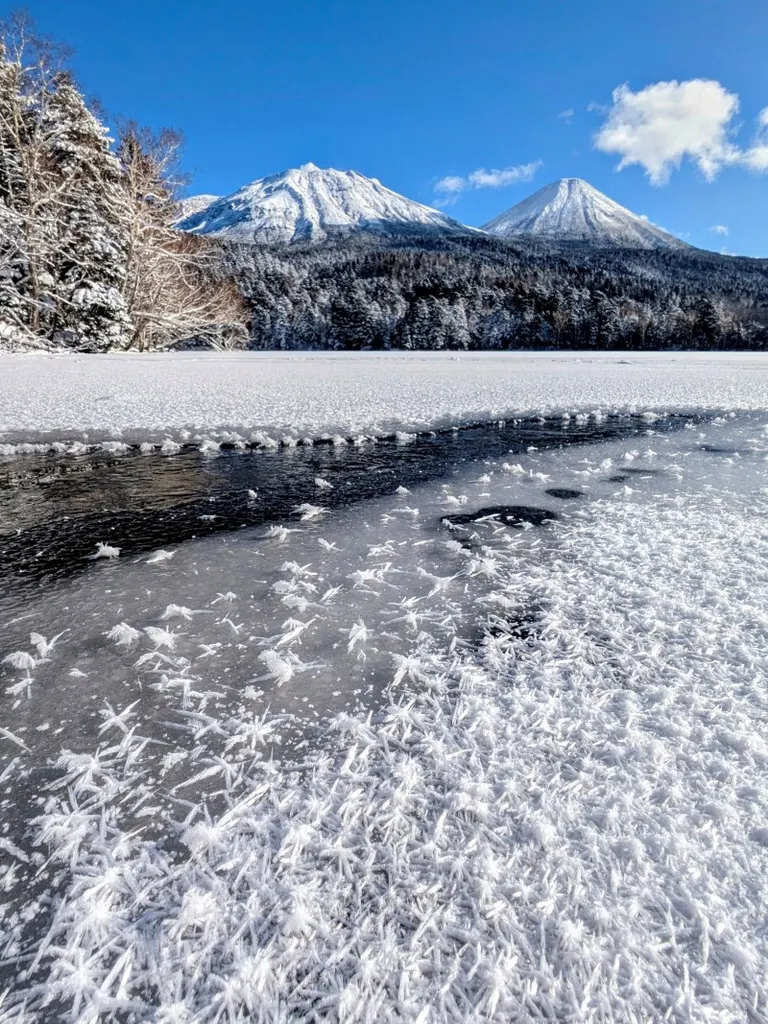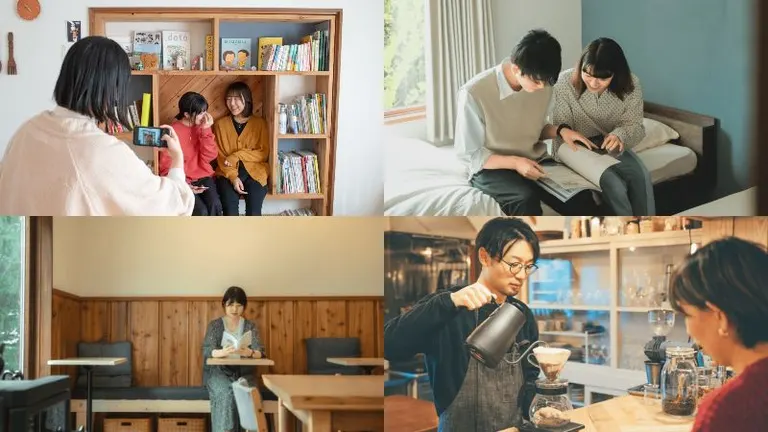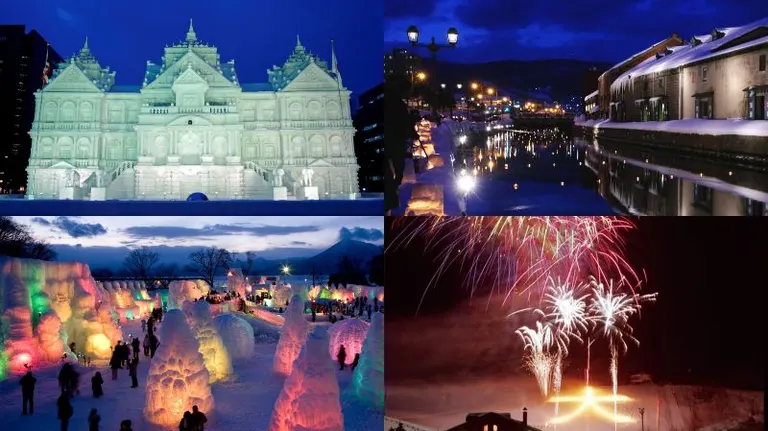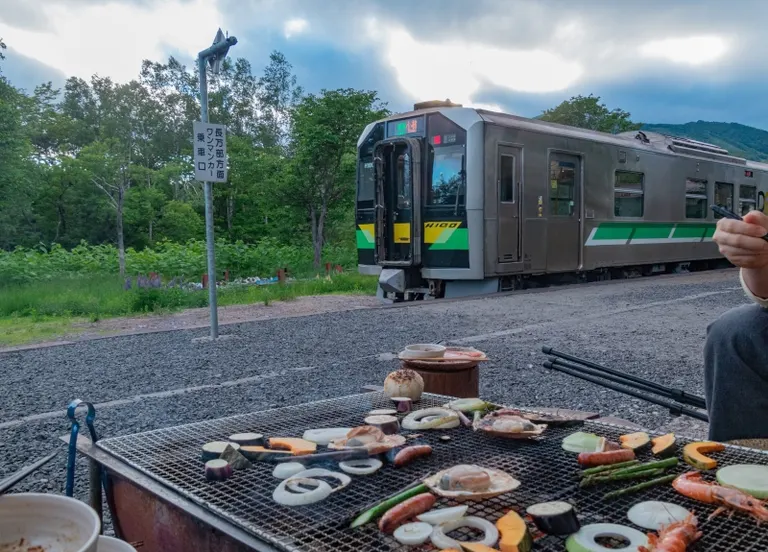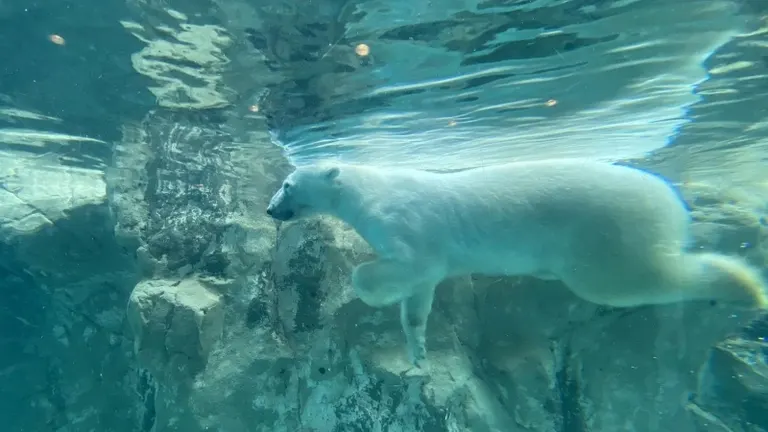
ARTICLES
Asahiyama Zoo Complete Guide 2025: Introducing the must-see attractions, recommended facilities, opening hours and access
"Asahikawa City Asahiyama Zoo (Asahiyama Zoo)" in Hokkaido is a popular tourist spot that you should definitely visit when traveling to Asahikawa, Biei, Furano, etc. It is famous for being able to observe lively animals up close, including seals swimming in the cylindrical aquarium "Marine Way", munching time, and penguins walking.
This time, we will introduce in detail the highlights of Asahiyama Zoo, such as the animals and events you definitely want to see, as well as tips for a time-saving and efficient tour, and convenient access.
- Very popular with families! What is Asahiyama Zoo?
- Don't worry if it's your first time! Asahiyama Zoo's highlights 2-1. Three animals whose behavioral exhibits are a must-see
- Tips for visiting Asahiyama Zoo and how to get around efficiently and save time 3-1. There are three entrance gates. Recommendations for each case
- Useful information for enjoying Asahiyama Zoo 4-1. How to enjoy lunch and souvenirs
- Have fun by learning about the highlights and tips for getting around!
- Basic information about Asahiyama Zoo, including opening hours, admission fees, and other information
2-1-1. The seals swimming on the marine way are a must-see!
2-1-2. Watch penguins swimming in the underwater tunnel
2-1-3. Red pandas crossing an overhead suspension bridge!
2-2. Three animals that you can enjoy watching in impressive ways
2-2-1. I was surprised to see polar bears diving and walking right next to them!
2-2-2. I was surprised to see snow leopards approaching from the side and above!
2-2-3. I was surprised to see the wolf approaching me so close!
2-3. Three animal exhibits that will pique your intellectual curiosity
2-3-1. Learn about the symbiosis exhibit at the Spider Monkey and Kapibara Pavilion
2-3-2. Thinking about coexistence between brown bears and humans at the Ezo Brown Bear House
2-3-3. Learn about Hokkaido's nature and the problem of invasive species at the Hokkaido Animal House
2-4. 3 Must-See Guides & Events at Asahikawa City Asahiyama Zoo
2-4-1. "Mogu Mogu Time" and "Naruhodo Guide" are must-sees!
2-4-2. Check out the Midsummer "Night Zoo" and Midwinter "Snow Light Zoo"
2-4-3. The popular "Penguin Walk" is a must-see in winter
3-1-1. If you are taking a bus or taxi, use the main gate or east gate.
3-1-2. If you don't have much time or don't want to walk much, use the West Gate.
3-1-3. The entire site is on a slope, so be careful when leaving the East Gate
3-2. It's best to go around the park counterclockwise
3-2-1. Plan your itinerary at 10am to save time and travel efficiently
4-2. Be aware of spring and autumn closing periods
4-3. You can pay the admission fee in advance or cashlessly
4-4. Transportation information: You can get there by car or by bus
Very popular with families! What is Asahiyama Zoo?
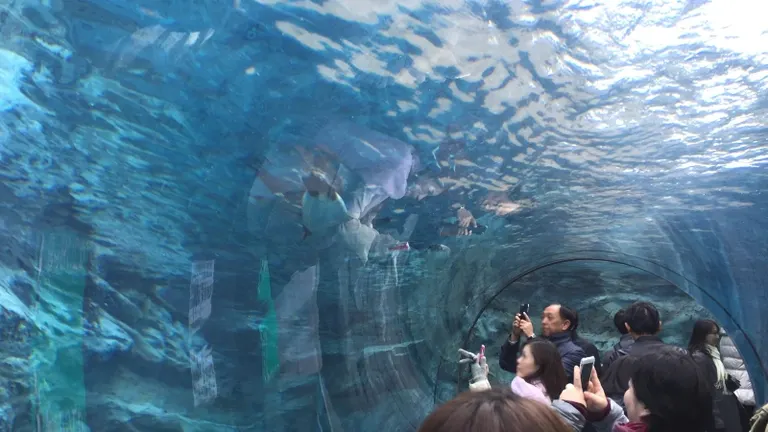
You can watch penguins swim as if they are flying in the air.
Asahiyama Zoo is the northernmost zoo in Japan, which opened in 1967. In the past, the number of visitors was sluggish, but it became very popular after it started "behavioral exhibits" in 1997. It has now become a famous tourist spot representing Hokkaido, with a constant stream of tourists, and is visited by approximately 1.4 million people from both Japan and abroad every year.
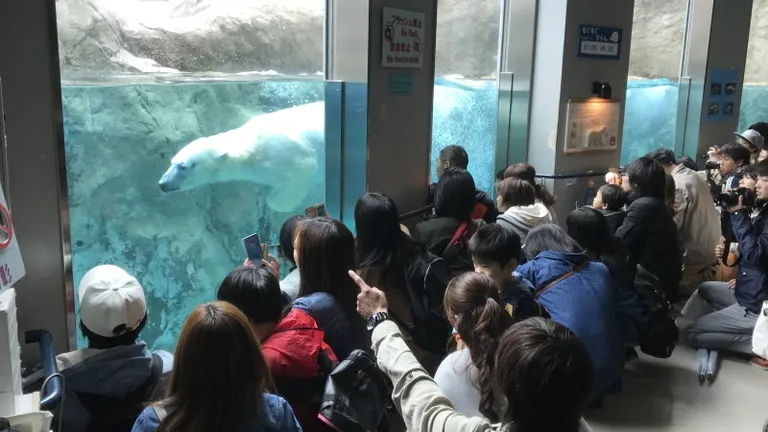
The sight of polar bears swimming is very popular
Behavioral exhibits are an exhibition method in which animals are kept in a natural environment that is comfortable for them. They are not just exhibits that show the animals' appearances, but exhibits that show the animals' behavior and lifestyle. You can see lively animals, such as polar bears diving into an aquarium right in front of your eyes and red pandas crossing a suspension bridge overhead.
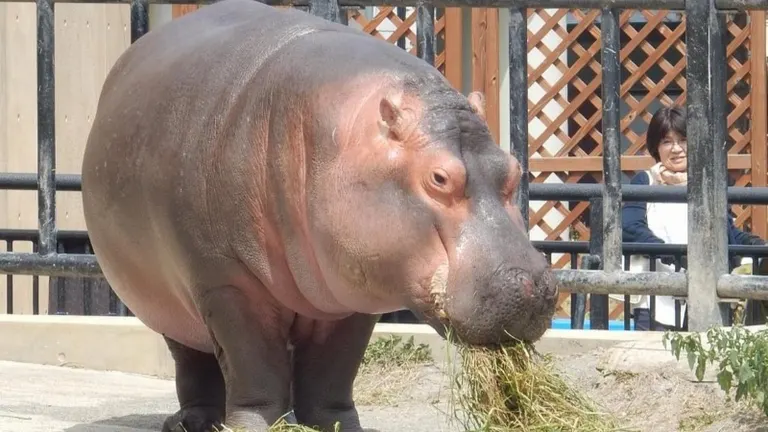
The way they eat their food looks adorable
It's not just the behavioral exhibits that are popular. Other popular exhibits include the "Symbiosis Exhibit," where animals that live in similar habitats are kept in the same space, and the "Mogu Mogu Time," where the zookeepers feed the animals and explain their ecology. In addition, the zoo is easily accessible by public transportation, about 40 minutes by bus from JR Asahikawa Station and about 35 minutes from Asahikawa Airport, making it easy for tourists to visit.
Don't worry if it's your first time! Asahiyama Zoo's highlights
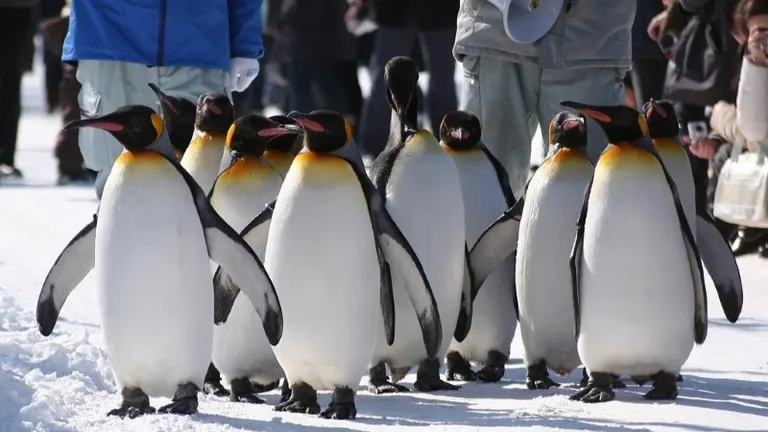
The Penguin Walk is famous
Asahiyama Zoo has a lot to offer! You can see animal behavioral exhibits all over the zoo, and there are also many guided tours such as "munching time" and "penguin walks." Although they are all worth seeing, we have carefully selected the exhibits and events that we recommend you see first when you visit Asahiyama Zoo for the first time.
3 Animals with Must-See Behavioral Exhibits
The zoo has a variety of animal behavior exhibits where you can observe the lively behavior of various animals. Here we will introduce some of the most famous animal behavior exhibits.
The sight of seals swimming on the marine way is a must-see!
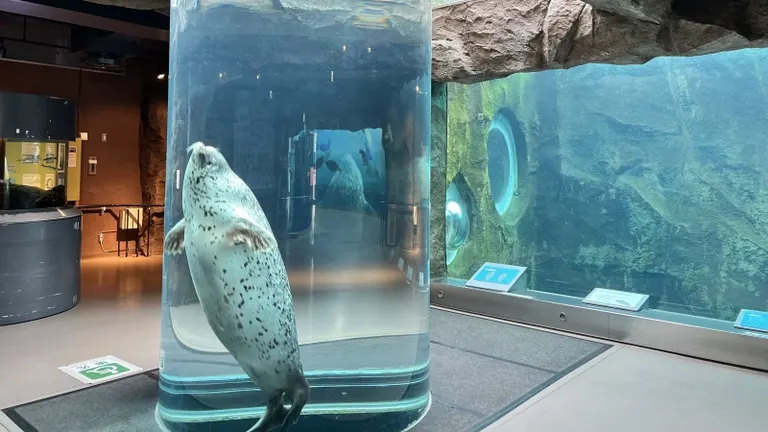
Seals passing through the marine way
The Seal House, which displays spotted seals and black-backed gulls, is a must-see when visiting Asahiyama Zoo. In particular, the sight of the seals going up and down on the marine way in front of you inside the building is a must-see! Along with swimming in the large tank, you can enjoy watching the seals swimming energetically up close. As they frequently pass by the marine way, there are plenty of opportunities to take pictures. (*Please do not use flash when taking photos.)
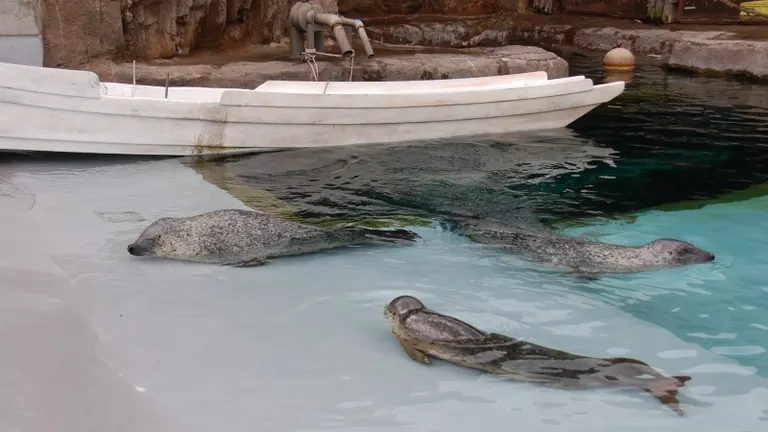
An outdoor exhibit reminiscent of a fishing port
The outdoor area is designed to resemble a fishing port in Hokkaido, and in order to recreate the life of wild seals, they even raise injured black-backed gulls that can no longer fly. You can enjoy watching the seals lazily lounging about or swimming energetically.
Watch penguins swim in an underwater tunnel
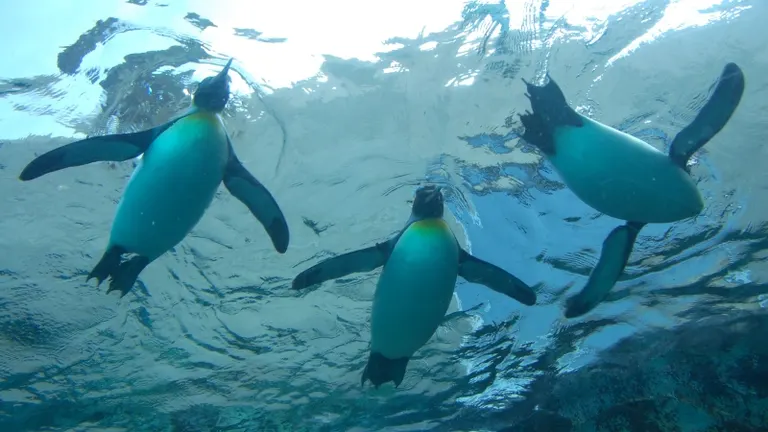
You can see it from directly below
Penguins are as popular as seals at Asahiyama Zoo. At the Penguin House, you can see four types of penguins, King penguins, Gentoo penguins, Humboldt penguins, and Rockhopper penguins, both indoors and outdoors. In addition, the feeding time "munching time" and the "Penguin Walk" held during the snowy winter season are must-sees.
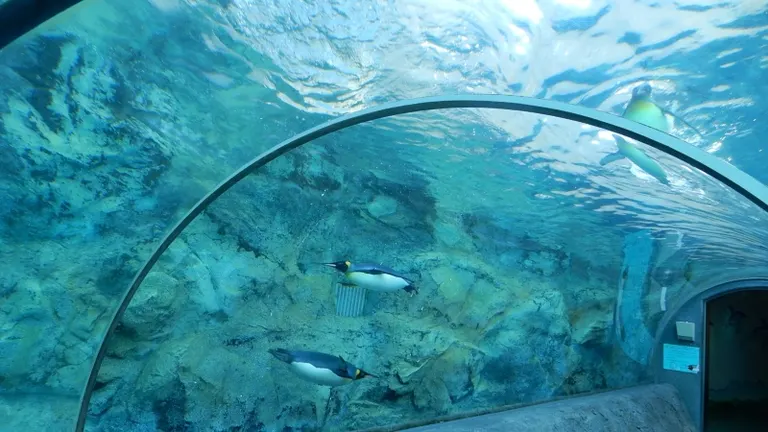
Semicircular underwater tunnel
Inside the aquarium, there is a glass tunnel that runs through the penguin tank, where you can watch the penguins swimming energetically as if you were walking underwater. In stark contrast to the penguins lazing about on land, the sight of many penguins gliding back and forth through the water is a spectacular sight, almost as if they are flying in the sky. Outside the aquarium, you can observe the adorable penguins right in front of you, which is sure to make your heart flutter.
Red pandas crossing an overhead suspension bridge!
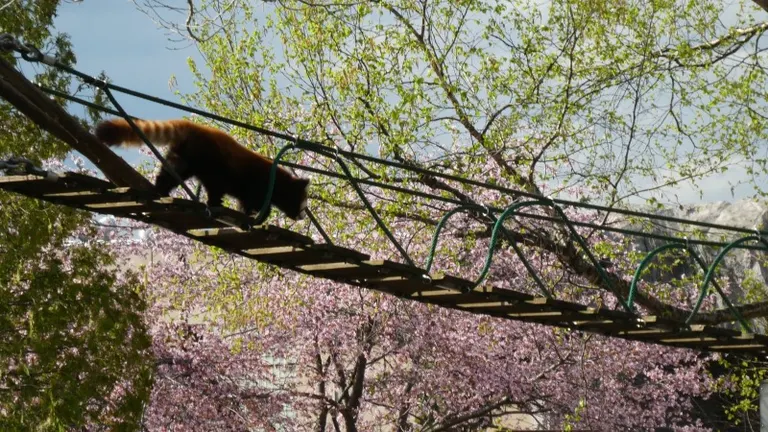
Red panda crossing a suspension bridge
The Red Panda House, where the red pandas are kept, is a very popular spot to see the red pandas crossing the suspension bridge that spans overhead on the observation path. There are 3.5-meter-high suspension bridges between the enclosures and the trees on either side of the observation path, and you can watch the red pandas trotting across the suspension bridge from directly below.
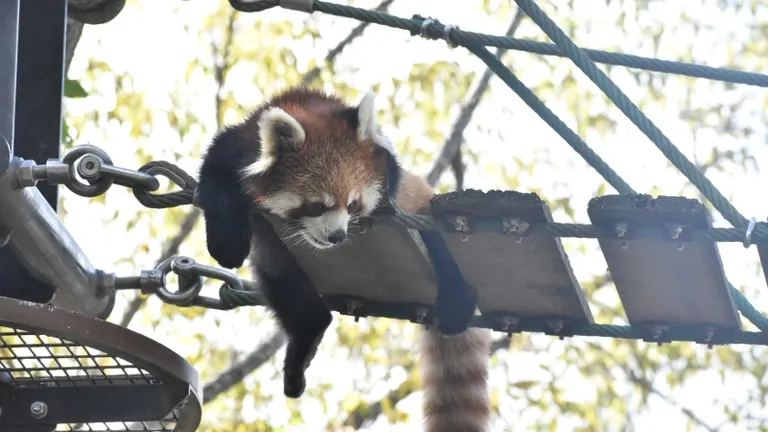
Taking a relaxing break on the edge of a suspension bridge?
Some of the areas are bay windows, so you can observe them eating and sleeping up close. You can see the red pandas climbing trees and crossing bridges, and you can feel the love for their every move. You can get a better view of them crossing the suspension bridge from a little distance away than directly under it.
3 Animals to Enjoy the Spectacular Appearances of
Asahiyama Zoo has many mechanisms that allow you to enjoy the animals in the behavioral exhibits in a more dynamic way. Here are three animals that you can enjoy watching in a dynamic way, as if you can hear the animals' breathing.
I was amazed to see the polar bears diving and walking right next to them!
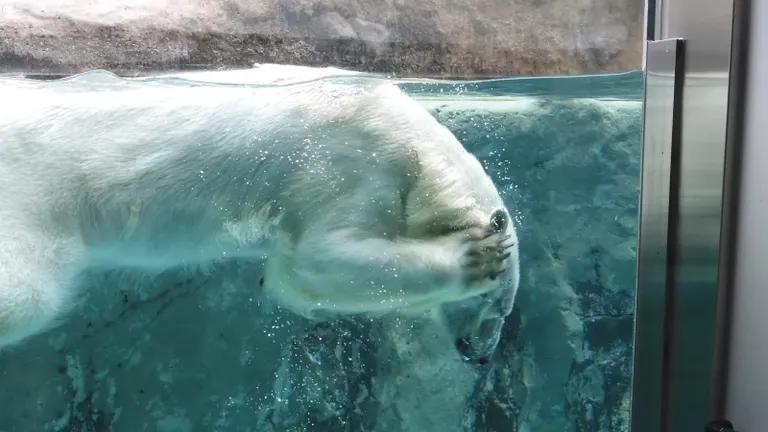
The polar bears are very impressive!
The Polar Bear House, which keeps polar bears, has an enclosure with a huge pool that can be observed from indoors, and an enclosure without cages that uses a moat. Indoors, you'll be amazed at the spectacular sight of the polar bears diving from land into the pool! You can observe the huge, pure white bodies swimming underwater from right next to the pool, and you can clearly see their faces, the movement of their limbs, and even their fur fluttering in the water.
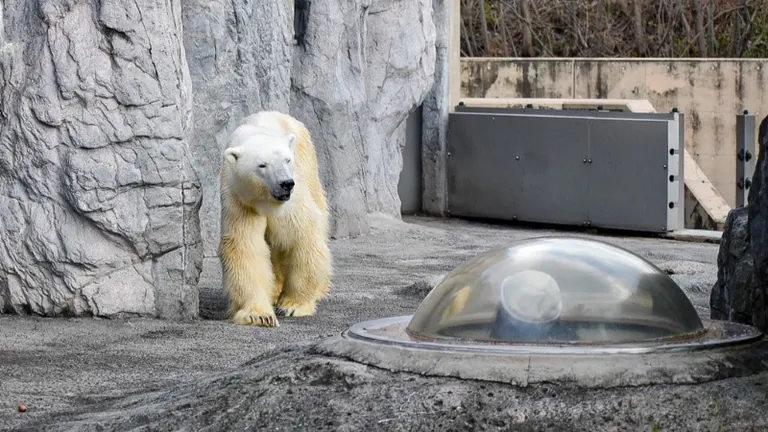
Capsule-shaped Seals Eye
Along with the indoor pool, another popular observation spot is "Seal's Eye," where you can see the polar bears from the perspective of the seals being hunted. This is a capsule-shaped observation window in the middle of the cage-free enclosure that uses a moat. You can observe by sticking your head inside Seal's Eye from under the enclosure and looking up.

Even when viewed from the facility's windows, it is right in front of your eyes.
Seeing the polar bears' paws approaching right next to your head makes you feel so nervous that you think you might get trampled, even though you know it's a safe place. There may be a line at the viewing spot where you can take turns observing, but this is a viewing spot that you definitely want to experience.
I was surprised to see the snow leopard approaching from the side and above!
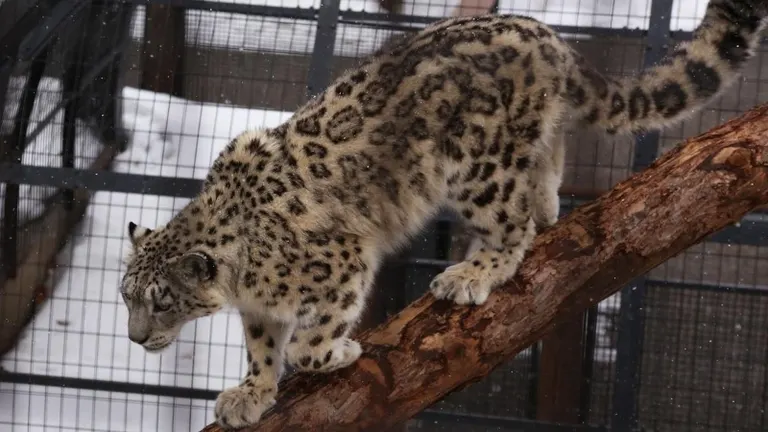
Snow leopards so close
The "Moujukan" where snow leopards and other animals are kept is a facility where you can observe the powerful beasts up close from various angles, such as directly beside or directly below them. In addition to snow leopards, the zoo also keeps Amur leopards, lions, and Amur tigers.
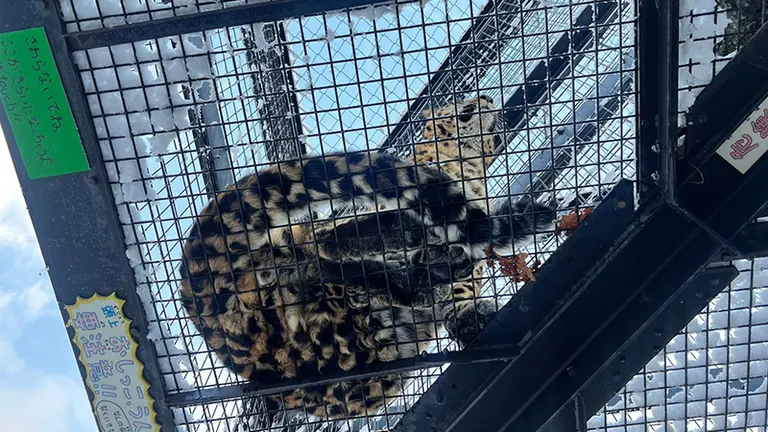
Amur Leopard
You can also observe from directly below the cages, where they jut out into the air, and you can clearly see the pads of the snow leopards and Amur leopards' paws. The area where you can observe snow leopards right next to the cage is so close that there is a sign that says, "Pee, fly! Be careful when you turn your tail!" You can enjoy a thrilling observation of wild animals.
I was surprised to see the wolf approaching so close!
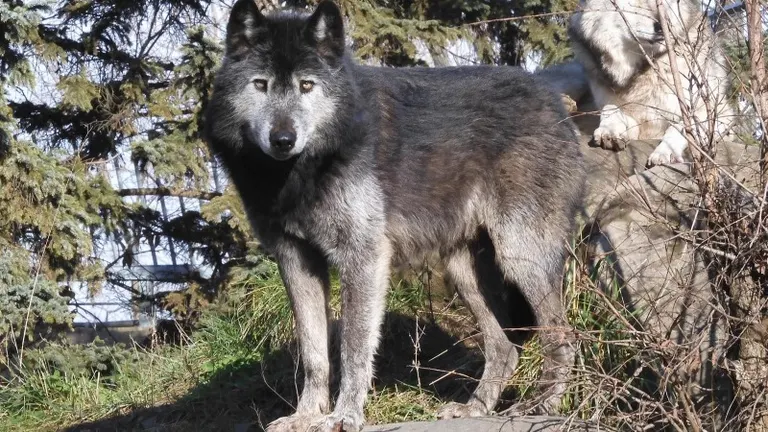
You might get a little startled if your eyes meet.
The Wolf Forest, where the gray wolves are kept, is an exhibition facility modeled after the Hokkaido wilderness of 100 years ago, with Ezo deer kept next to the cages. Incidentally, Ezo wolves lived in Hokkaido until around the 19th century, but became extinct around 1900 due to extermination efforts.
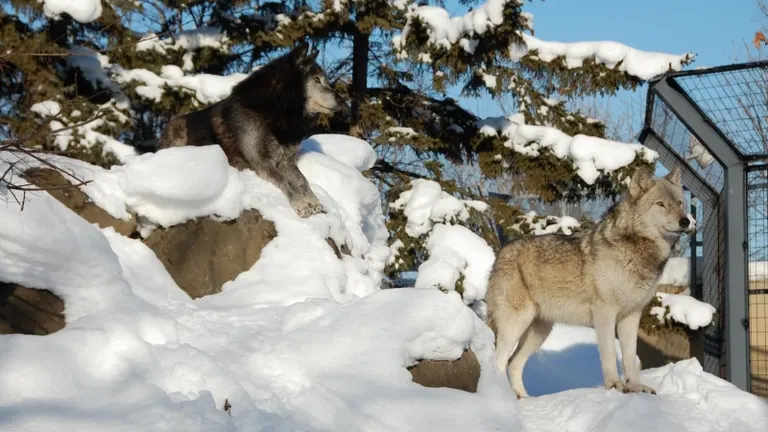
The wolf in the snow is also dignified.
At the Wolf Forest enclosure, you can watch the wolves bathing in the stream and howling on the rocky mountains from the observation hall or outdoors. One place to pay attention to is the dome-shaped observation area called "Hair's Eye" in a corner of the observation hall. Watching the wolves pass right next to you through the glass is so powerful it's almost frightening. It's a place you definitely want to experience.
3 animal exhibits that will pique your intellectual curiosity
Asahiyama Zoo has an ingenious way of exhibiting animals, so you can enjoy the cute behavior and impressive appearance of the animals while also feeling intellectually stimulated and feeling a little smarter. Each exhibit facility offers a sense of profound knowledge and social background, but here are three facilities that are particularly noteworthy.
Learn about the symbiosis exhibit at the Spider Monkey and Kapibara Pavilion
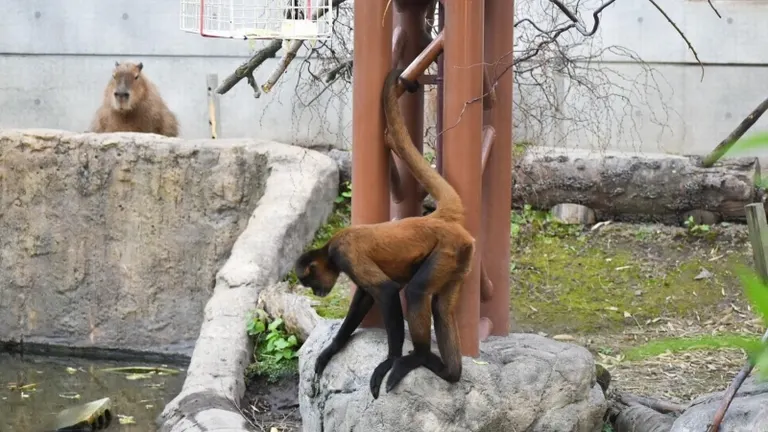
Geoffroy's Spider Monkey and Capybara
The Spider Monkey and Capybara House is one of Asahiyama Zoo's representative symbiosis exhibits. Spider monkeys and capybaras, which live in Central and South America, are exhibited in the same cage, and the facility is designed to separate the animals' habitats in the sky and on the ground. Since spider monkeys live in the trees of the forest, ropes are stretched across pillars about 7 meters high to create the image of a jungle. On the other hand, there is a pool above ground for capybaras, who spend the day in the water.
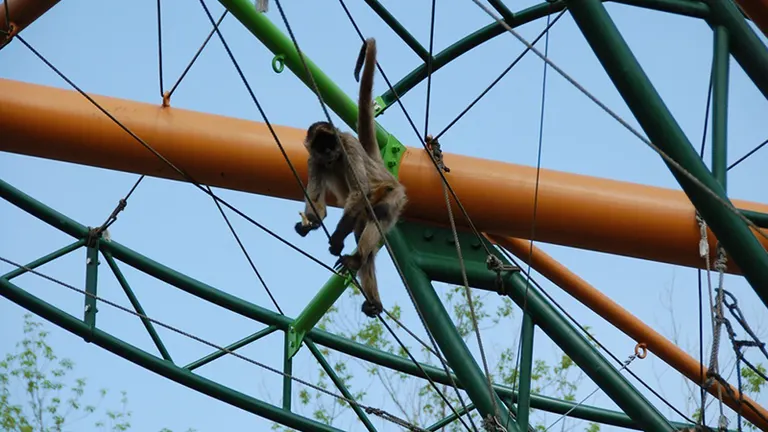
Active spider monkeys
Spider monkeys move around skillfully, using their tails like hands, and hop across the sky like members of a circus troupe. You'll also find it soothing to watch the capybaras, the world's largest rodent, lazing about beneath the facility. It's a strange feeling to be able to observe different animals in the same space, but this is as close to their natural state as possible. This is a facility where you can feel that a variety of animals are living in the same environment.
Thinking about coexistence between brown bears and humans at the Ezo Brown Bear House
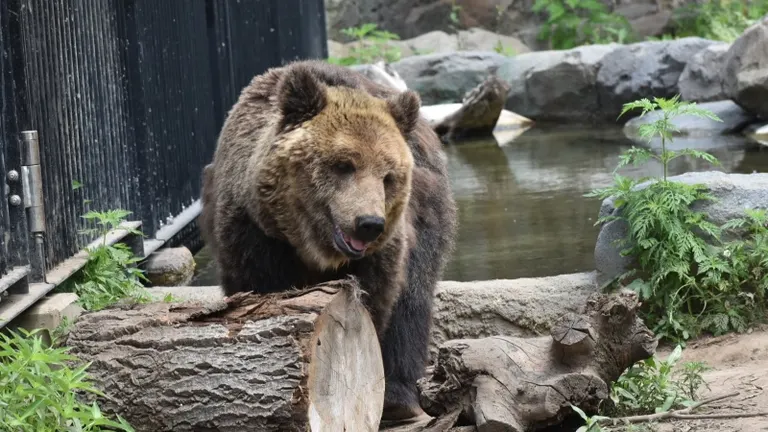
It feels like you've met someone in the woods.
The Ezo Brown Bear House is a facility where you can observe the impressive appearance of Ezo brown bears and also learn about the relationship between humans and animals. The outdoor enclosure is a deep, wide space planted with native Hokkaido trees, giving the feeling of peeking into a Hokkaido forest. In the indoor enclosure, you can observe the impressive appearance of the bears from up close, even through glass.
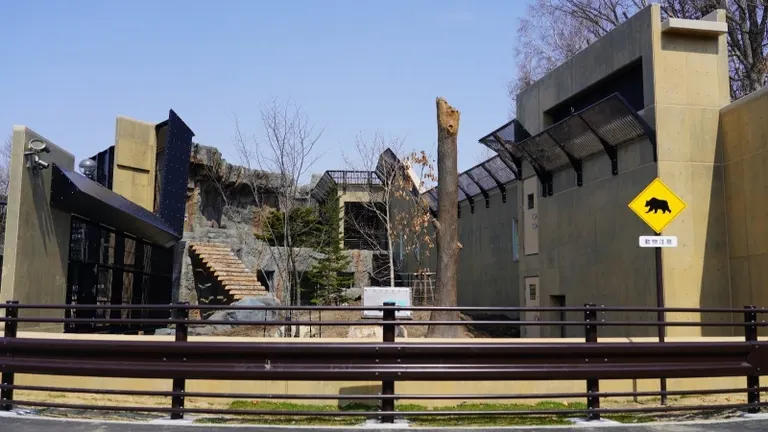
An outdoor enclosure with warning signs for animals
Inside the facility, there is a picture scroll that conveys the brown bear problem in Shiretoko, which was produced in cooperation with the Shiretoko Foundation, a public interest incorporated foundation, and a picture book writer living in Shiretoko, as well as a panel exhibit illustrating the ecology of wild Ezo brown bears. Recently in Hokkaido, we often see news about incidents and accidents involving Ezo brown bears. The exhibits are fascinating, as they explain the current state of the Ezo brown bear's habitat and the boundary between it and human living areas.
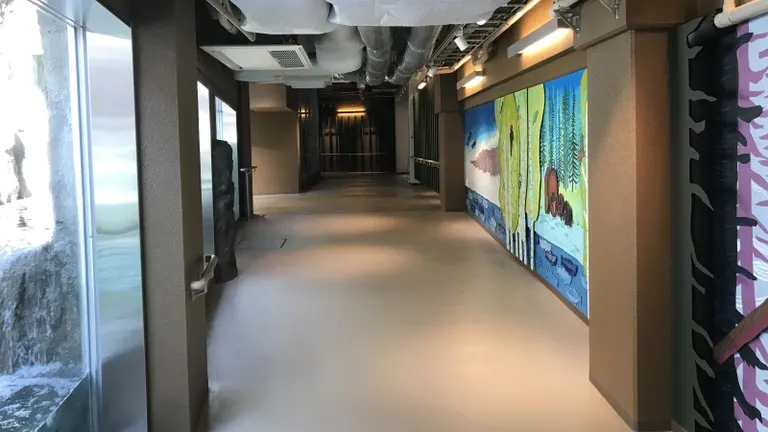
On the left is the indoor enclosure seen through the glass. On the right is an exhibit provided by the Shiretoko Foundation and others.
In fact, the Ezo Brown Bear house is actually a cub that was left behind when the mother Ezo Brown Bear, who had been living with her mother, ran away to live in a human settlement and was exterminated. In 1999, Asahiyama Zoo took it under their protection. The Ezo Brown Bear House is a facility where you can enjoy the impressive sight of the bears, as well as think deeply about coexistence with animals.
Learn about Hokkaido's nature and the problem of invasive species at the Hokkaido Animal House
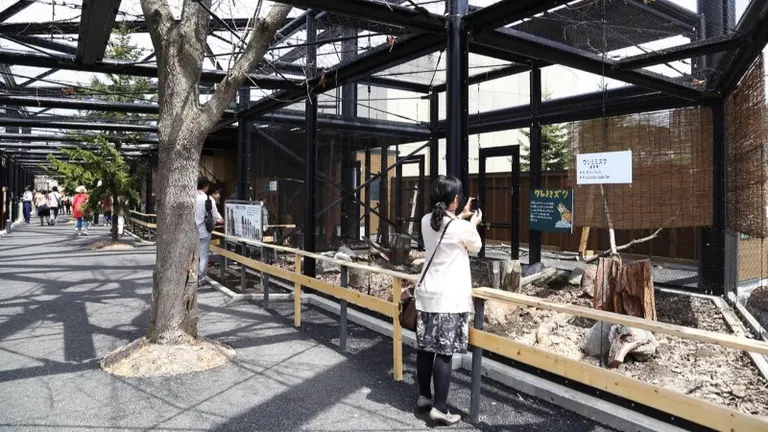
Hokkaido Animal House
The Hokkaido Animal House is a facility that exhibits many birds and small animals from Hokkaido. It is designed to give you the feeling that you are in a Hokkaido forest observing the animals and birds, and you can feel the richness of Hokkaido's natural forests and mountains.
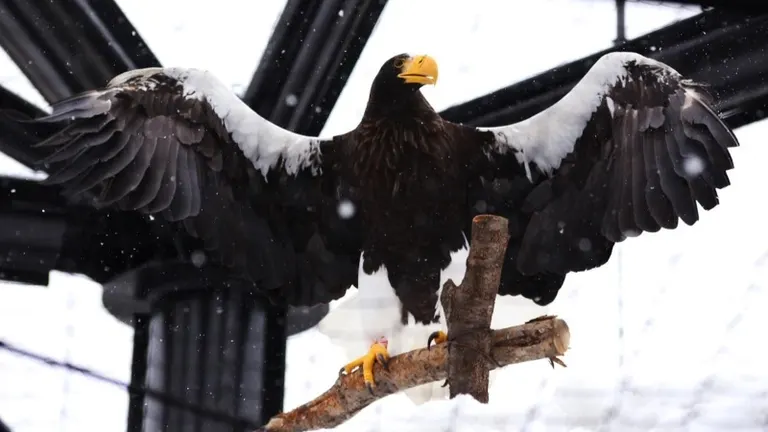
Steller's sea eagle with wings spread
A large bird cage made up of several trees houses a white-tailed eagle, a Steller's sea eagle, and a mountain hawk-eagle, and around the bird cage there are a variety of birds, owls, and mammals, including owls, woodpeckers, Hokkaido squirrels, Hokkaido raccoon dogs, and Hokkaido snow hares. Even though they are inside a bird cage, the sight of the white-tailed eagle and Steller's sea eagle with their large wings spread out is majestic.
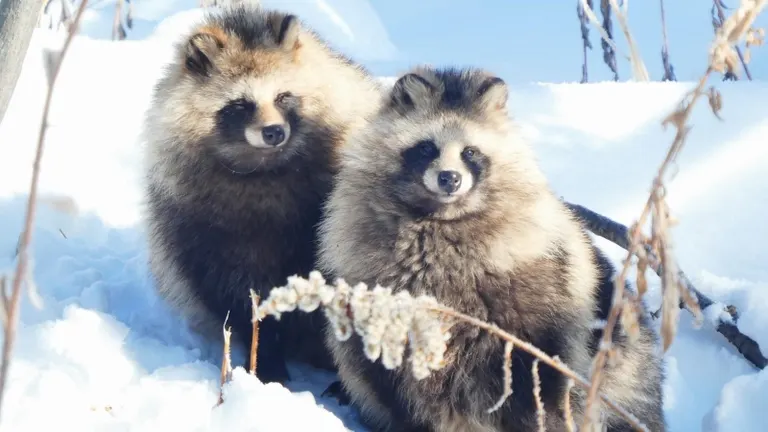
A fluffy Ezo raccoon dog
On the other hand, this facility also has animals that are not native to Hokkaido. Exotic species and Hokkaido endemic species, such as raccoons and Hokkaido raccoon dogs, Japanese martens and Hokkaido sable martens, are exhibited for comparison. This is also a place where you can think again about the problem of invasive species that destroy the balance of the ecosystem.
3 Must-See Guides and Events at Asahikawa City Asahiyama Zoo
Asahiyama Zoo hosts a variety of guided tours and events throughout the year. Some are held every day, while others are only held on certain days of the week or during certain seasons. Here we will introduce some of the most famous and must-see events.
"Mogu Mogu Time" and "Naruhodo Guide" are must-sees!

Giraffe eating
During "munching time," the zookeepers will feed the animals while explaining their distinctive behavior. It's worth seeing things like a polar bear diving for the food the zookeepers have thrown, or a giraffe eating grass by sticking out its long tongue and rolling it around. During "Naruhodo Guide," there is no feeding, but just like during "munching time," the zookeepers will still explain the distinctive behavior of the animals.
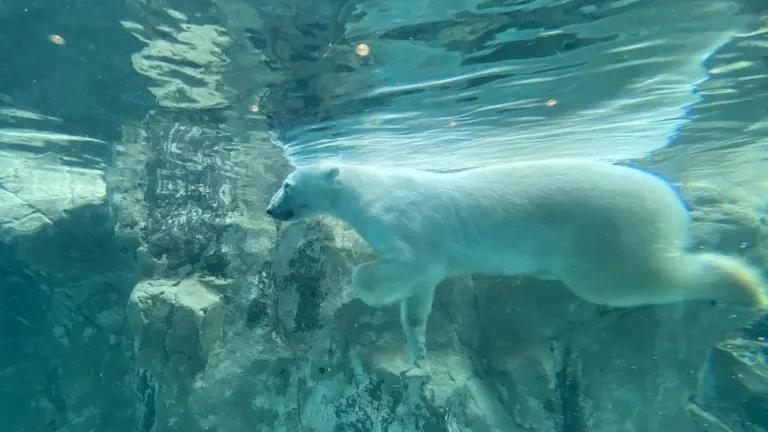
The polar bears' munching time is a must-see!
In both cases, the zookeepers' explanations are interesting and entertaining, and there are many points that will make you think, "I see!" Both are held every day for about 10-15 minutes at a time, and are held in many animal houses. The time and animal for which they will be held varies from day to day, and is decided on the morning of the day. They are announced on Asahiyama Zoo's official website and on bulletin boards in the zoo every morning around 10:00, so be sure to check them when you visit.
Check out the Midsummer "Night Zoo" and Midwinter "Snow Light Zoo"
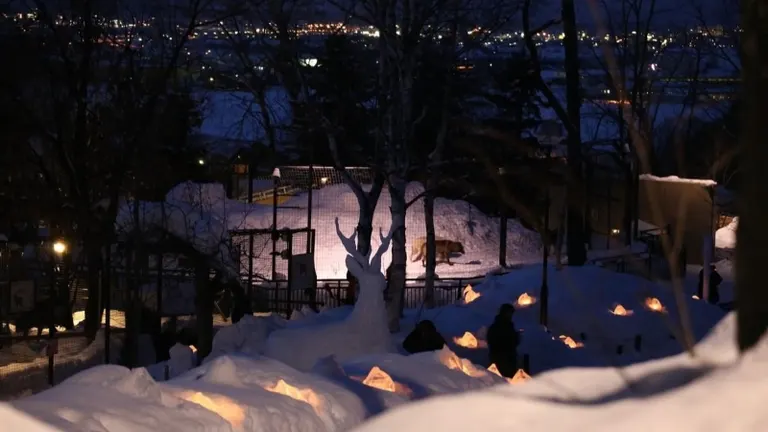
The garden lit by ice candles
Asahiyama Zoo extends its opening hours until night for about a week around the Obon festival and for three days in the middle of winter. In summer, it is open as the "Night Zoo" until 9pm (last entry 8pm), and in winter, it is open as the "Snow Light Zoo" until 8:30pm (last entry 8pm), and with the exception of some facilities, you can visit the zoo just like during the day. There are only a few days throughout the year when you can enter the zoo at night, so this is a rare opportunity.
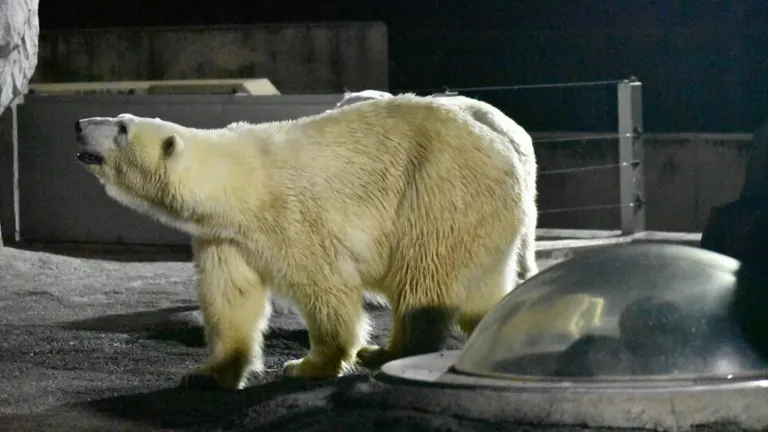
The polar bears seen at night are also quite impressive
The appeal of the zoo at night is that you can enjoy the lively behavior of nocturnal animals. For example, hippos tend to stay still during the day, but at night they can often be seen actively roaming around their enclosure. Lions also tend to rest in the shade during the day, but at night they become active and show signs of hunting.
The extremely popular "Penguin Walk" is a must-see in winter
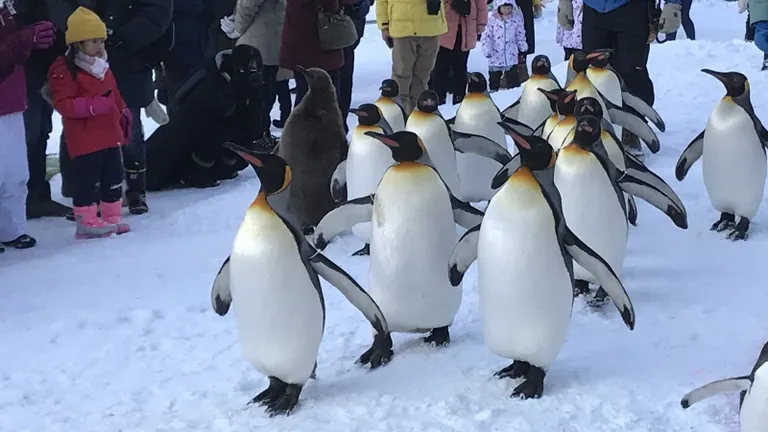
A must-see in winter! Penguin Walk
"Penguin Walk" is a seasonal winter event at Asahiyama Zoo. Many people visit just to see this, and the sight of a group of penguins strolling on the snow is so adorable and cute! It's also great to see them sliding and running freely on the snow. If you're visiting Asahiyama Zoo in the winter, this is an event you definitely want to see.
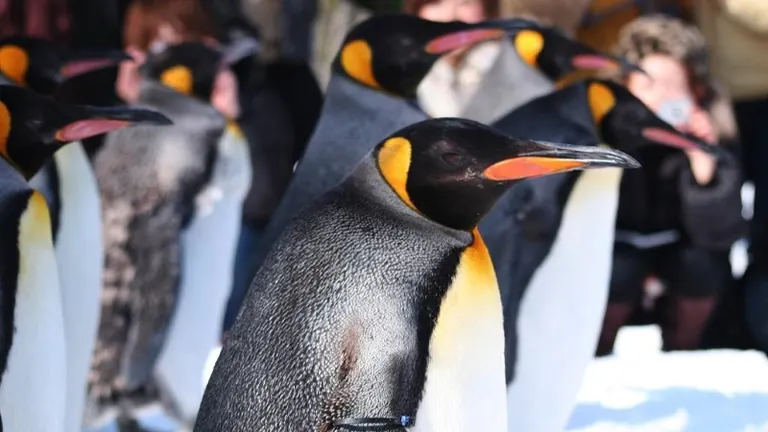
You can see it from a fairly close distance
The Penguin Walk is usually held twice a day at 11:00 and 14:30 during the snow season (late December to mid-March) (only once in the morning in March). Starting from the Penguin House, the penguins march about 500 meters through the park and return to the Penguin House in about 30 minutes. There are so many visitors that crowds form on both sides of the route the penguins take. Some people even set up a spot and wait well before the penguin walk begins.
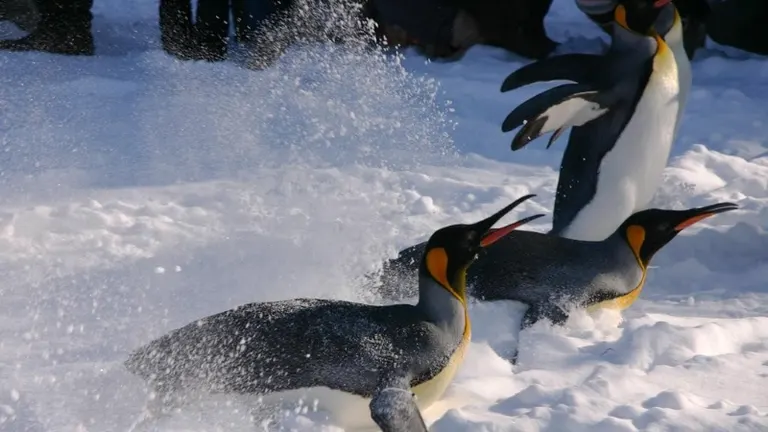
The penguins are full of energy as they walk and slide around on their bellies.
By the way, the Penguin Walk is not an event that was started for visitors, but is actually a project that started to alleviate the lack of exercise in the penguins and build up their physical strength for breeding. It is not just a spectacle event, but also a way of exhibiting animals that takes into consideration their natural ecology. (*The event may be canceled or changed at short notice depending on the condition of the penguins and the course conditions.)
Tips for visiting Asahiyama Zoo and how to get around efficiently and save time
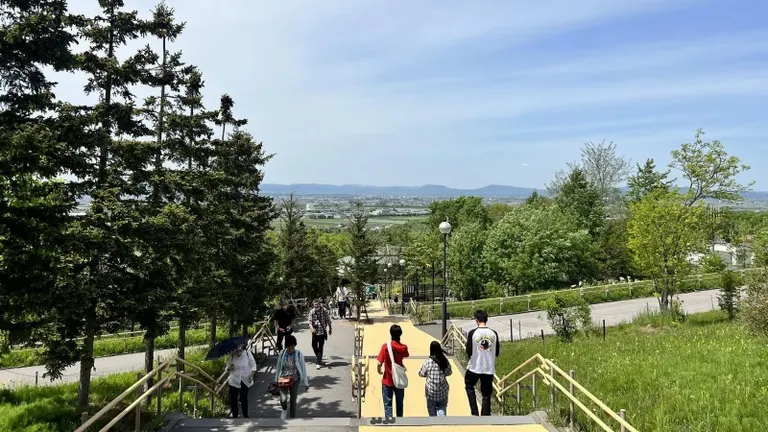
Asahiyama Zoo viewed from the East Gate
If you are going to visit Asahiyama Zoo, be sure to remember some tips for visiting the zoo and the most efficient way to get around. You will be able to spend your time there more enjoyably and fulfillingly. Which entrance gate is best to use? What is the best route to take around the zoo? These are especially important points for those who have limited time and want to enjoy the most in a short amount of time.
There are three entrances. Each case has its own recommendation.
Asahiyama Zoo has three entrances: the main gate, the west gate, and the east gate. The main gate and the west gate are relatively close to each other, but the east gate is located opposite the main gate. Which entrance you use depends on your transportation method and the priority of the animals you want to see.
If you are taking a bus or taxi, use the main gate or east gate.
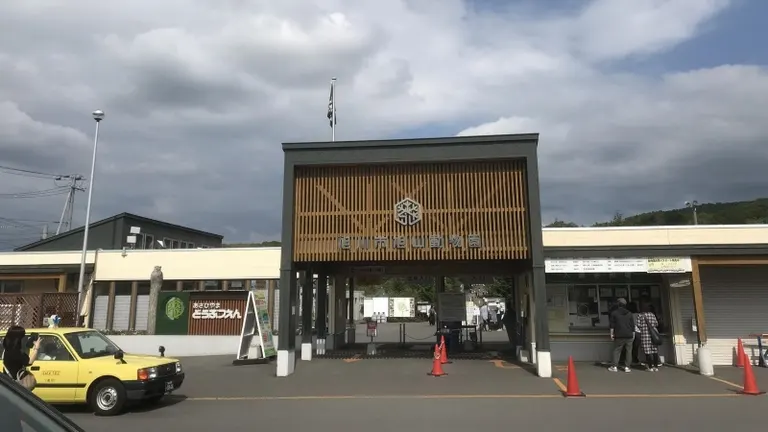
Asahiyama Zoo's main gate
If you are traveling by bus or taxi, it is common to use the Main Gate or East Gate.
■ If you go by bus Use the main gate. The bus stop is located very close to the main gate.
■ For group buses and tour buses Buses usually depart and arrive at the East Gate, but may depart and arrive at the Main Gate depending on the bus you are taking and the situation at the time.
■ If you use a taxi The main gate is closer to Asahikawa Station and Asahikawa Airport. Also, taxis may be waiting at the main gate.
If you don't have much time or don't want to walk much, use the West Gate.
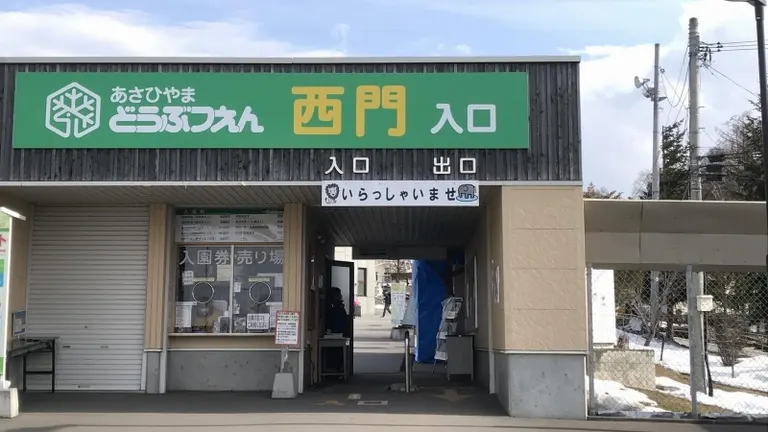
Asahiyama Zoo's West Gate
The West Gate is closest to each animal house, and the Seal House is particularly close to the West Gate. If you have limited time and want to see everything efficiently, or if you don't want to walk too much, the West Gate is the best choice. Asahiyama Zoo also has many parking lots near each gate, but the West Gate has the most parking spaces, so it's easy to park there. However, parking near the West Gate is paid (500 yen a day), while parking near the Main Gate and East Gate is free (some parking lots near the Main Gate are paid).
The entire site is on a slope, so be careful when leaving the east gate.

Asahiyama Zoo's East Gate
Asahiyama Zoo itself is a facility located on the slope of a mountain, with the main gate at the bottom of the mountain and the east gate at the top of the slope. If you use the east gate, you may not mind the downward stairs and slopes when entering the zoo, but be aware that you will have to climb stairs and slopes when leaving the zoo. There is also a free shuttle bus that runs to the stairs at the east gate, so even those who are not confident in their legs can enjoy themselves without worry.
It's best to go around the park counterclockwise
When you visit, it is best to look around counterclockwise, no matter which gate you enter through. The entrances to each animal house and the guide signs are designed to be viewed efficiently if you go around counterclockwise. Unless you have a special reason, such as moving around during the munching time, you should go around in a counterclockwise direction.
If you want to save time and get around efficiently, start planning your trip at 10am.

Part of the schedule published on the Asahiyama Zoo's official website
If you want to get around efficiently and save time, it's essential to check the guide's schedule, which is announced every morning at around 10am as Mogu Mogu Time! Check what time the event featuring animals you absolutely want to see is being held, and check the park map to make sure your travel schedule is not too tight. If you plan where and when to go, you won't waste time and you won't waste time going back and forth.
Useful information for enjoying Asahiyama Zoo
We will introduce some useful information for enjoying Asahiyama Zoo, including information on dining and souvenirs, opening hours, admission fees, and access without a car.
To enjoy lunch and souvenirs
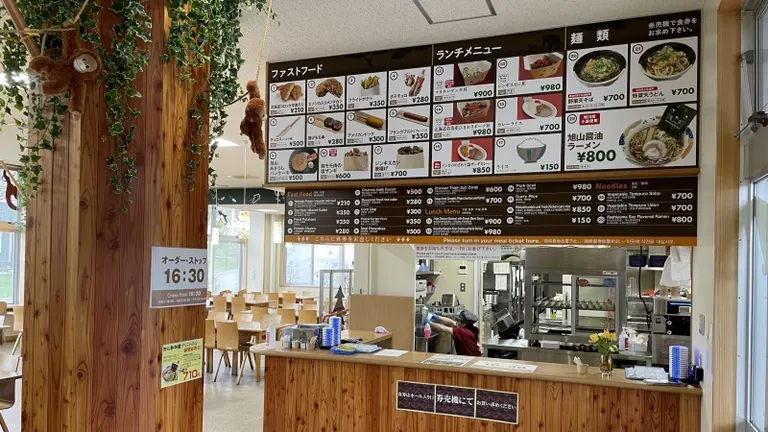
Asahiyama Zoo Central Cafeteria
There are several restaurants and souvenir shops in the park. There are several shops mainly from the main gate to the west gate, and also on the second floor of the building at the east gate. There are also food, drink and souvenirs with motifs of animals in the park. The menus at the restaurants vary depending on the store, but you can mainly enjoy meals such as noodles like ramen, curry, rice bowls, and fast food such as minced cutlet and french fries.
<Restaurant> Near the main gate | Museum Cafe ASAHIYAMA Opposite Totori Village | FOOD BASE CAFE TOTORI Seal House 2nd floor | Asahiyama Zoo Central Cafeteria Near the west gate | FarmZoo Next to the Chimpanzee Museum | Asahiyama Zoo Club Komorebi no Oka SHOP East Gate 2nd Floor | ?? Kamuichikapu
<Souvenir Shop> Near the main gate | Museum Shop ASAHIYAMA Opposite Totori Village | Asahiyama Zoo Club Ikoi Square Shop Seal House 2nd floor | Asahiyama Zoo Central Store "Asahiyama ZOO SHOP" Near the west gate | FarmZoo Next to the Chinpanji Museum | ASAHIYAMA Zoo Club Gallery (inside Komorebi no Oka SHOP) East Gate 2nd floor??|Tail n Tail
Restaurants are generally quite busy during lunch hours. Make the most of your time by prioritizing the time to see the animals you want to see, such as when they are munching, and try to use your time efficiently by having an earlier or later lunch. Souvenir shops tend to be busy in the afternoon, especially as the zoo closes. If you are using the bus, pay attention to the departure time and enjoy your shopping.
Be aware of spring and autumn closing periods
Asahiyama Zoo is open for two seasons: summer and winter. Summer is generally from late April to early November, and winter is from mid-November to early April. The zoo is closed in mid-April and mid-November when the summer and winter seasons change. Be sure to pay attention to the closure periods when planning your trip. Opening and closing times may vary depending on the season.
Admission fees can be paid in advance or cashless
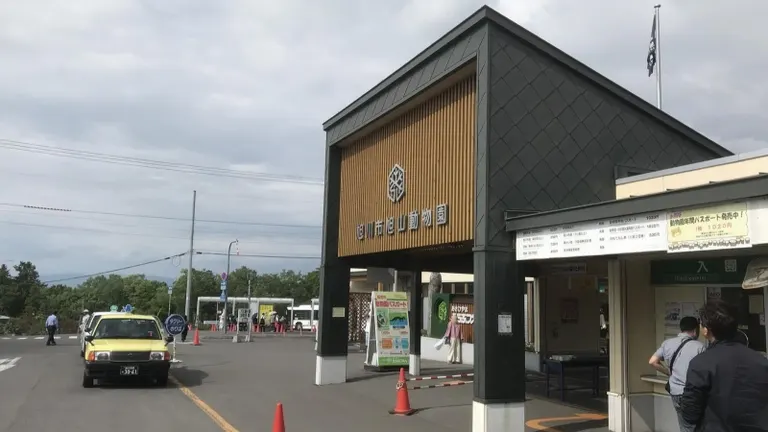
There is a ticket booth to the right of the main gate.
Admission fees can be purchased at the gates of each park, or in advance online or at convenience stores. If you don't want to wait in line at the gates, we recommend purchasing your ticket in advance. When purchasing your ticket at the gates, you can pay by cash, credit card, or any of the major cashless payment methods.
<Asahiyama Zoo admission fee> High school students and above: 1,000 yen per person Junior high school students and younger are free *There are also group discounts and discounts for Asahikawa residents.
Access information for cars and buses
If you are going to Asahiyama Zoo by car, such as a rental car, the nearest highway entrance/exit is Asahikawa Kita IC. It takes about 35 minutes from the highway exit. However, if you are coming from Sounkyo, Kitami, Abashiri, or Monbetsu, the Aibetsu IC on the Monbetsu Expressway is closer and more convenient.
<Travel time by car> Sapporo to Asahiyama Zoo: Approximately 2 hours New Chitose Airport to Asahiyama Zoo: Approximately 2 hours and 30 minutes Biei to Asahiyama Zoo: Approximately 40 minutes Furano to Asahiyama Zoo: Approximately 1 hour 15 minutes
There are buses heading to Asahiyama Zoo from Asahikawa Station and Asahikawa Airport. The bus stop at Asahikawa Station is right in front of you as you exit the station, bus stop number 6.
■ Asahikawa Station - Asahiyama Zoo route bus Service interval: Approximately every 30 minutes Duration: Approximately 40 minutes Fare: 500 yen for adults (SUICA and other transportation IC cards not accepted)
■ Asahikawa Airport to Asahiyama Zoo route bus Frequency of operation: 2 times a day Duration: Approximately 35 minutes Fare: 650 yen for adults (SUICA and other transportation IC cards not accepted)
Have fun by learning about the highlights and tips for getting around!
Asahiyama Zoo is one of Hokkaido's famous tourist destinations, and is always bustling with tourists. Along with the lively and adorable animals and their startlingly impressive appearances, the zoo is also attractive for its ingenious exhibits that stimulate intellectual curiosity. Make sure to make the most of your limited travel time by touring the zoo efficiently and enjoying your encounters with these wonderful animals.
(Photo courtesy of Asahikawa City)


■ Location: Asahiyama Zoo, Kuranuma, Higashiasahikawa-cho, Asahikawa City
■Opening hours (2025)
January 2nd (Thursday) - April 7th (Monday) 10:30-15:30 (Last entry 15:00)
April 26th (Sat) - October 15th (Wed) 9:30-17:15 (Last entry 16:00)
October 16th (Thursday) - November 3rd (Monday) 9:30-16:30 (last entry 16:00)
November 11th (Tuesday) - December 29th (Monday) 10:30-15:30 (Last entry 15:00)
・Special opening:
February 8th (Sat) - February 10th (Mon) 10:30-20:30 (Last entry 20:00)
Saturday, August 10th to Friday, August 16th 9:30-21:00 (last entry 20:00)
■Closed: April 8th to April 25th, November 4th to November 10th, December 30th to January 1st, 2026
■Admission fee: High school students and above 1,000 yen / Special rate for city residents 700 yen / Free for junior high school students and below
Click here for details and maps of "Asahiyama Zoo"
Writer Profile
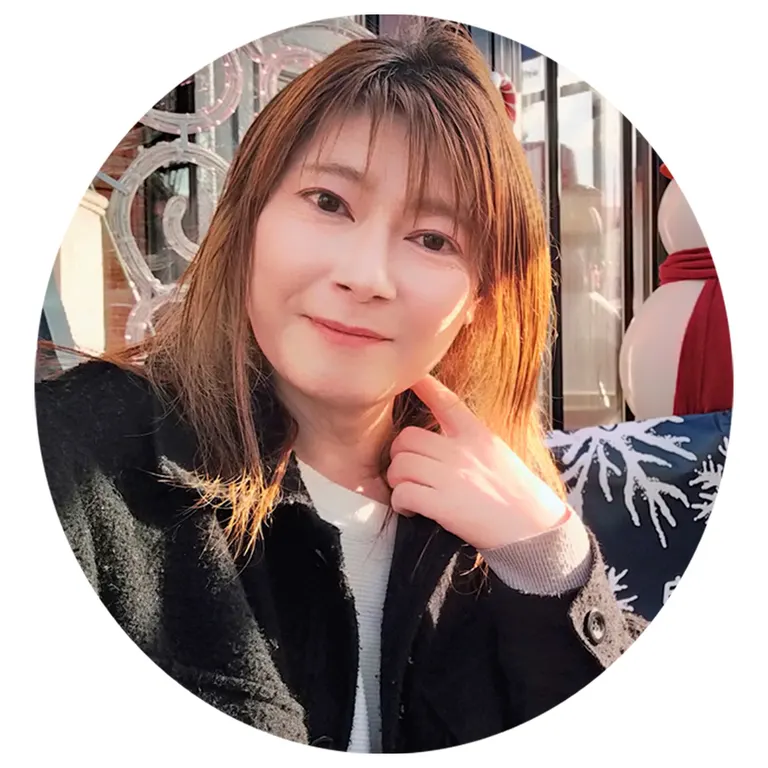 Travel Creator
Nobuka Kawashima
Travel Creator
Nobuka Kawashima
Born in Kanagawa Prefecture. After traveling to all 179 cities and towns in Hokkaido, he was enchanted by the charm and magic of the northern region and moved to Hokkaido in 2009. Since then, he has been involved in media interviews, filming, producing articles and videos, and planning and editing, mainly related to travel and regional revitalization. His mission is to "increase the number of Hokkaido fans."







